

Helping Autistic Youth Move Into Adulthood. The transition from adolescence to adulthood is never easy, and for young adults with autism spectrum disorder and their caregivers, it can seem especially daunting.
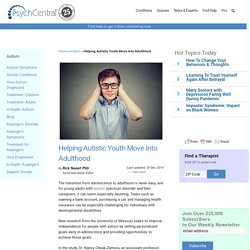
Tasks such as opening a bank account, purchasing a car, and managing health insurance can be especially challenging for individuals with developmental disabilities. New research from the University of Missouri seeks to improve independence for people with autism by setting personalized goals early in adolescence and providing opportunities to achieve those goals. In the study, Dr. Nancy Cheak-Zamora, an associate professor and researcher at the Thompson Center for Autism and Neurodevelopmental Disorders, measured the self-determination of young adults with autism to better assist their transition to adulthood. “We found that there was a disconnect between the support the caregivers are providing and what the young adults are doing themselves to become more independent,” Cheak-Zamora said. Source: University of Missouri. Breakthrough Study Reveals Biological Basis for Sensory Processing Disorders in Kids. Sensory processing disorders (SPD) are more prevalent in children than autism and as common as attention deficit hyperactivity disorder, yet the condition receives far less attention partly because it’s never been recognized as a distinct disease.

In a groundbreaking new study from UC San Francisco, researchers have found that children affected with SPD have quantifiable differences in brain structure, for the first time showing a biological basis for the disease that sets it apart from other neurodevelopmental disorders. One of the reasons SPD has been overlooked until now is that it often occurs in children who also have ADHD or autism, and the disorders have not been listed in the Diagnostic and Statistical Manual used by psychiatrists and psychologists. “Until now, SPD hasn’t had a known biological underpinning,” said senior author Pratik Mukherjee, MD, PhD, a professor of radiology and biomedical imaging and bioengineering at UCSF.
‘Out of Sync’ Kids Imaging the Brain’s White Matter. What is Sensory Processing: The Basics Explained. An introduction to autism that aims to... - Amazing Things Happen. How to Explain ADHD to a Child and Build Confidence. Jeremy, age 12, sits in my office flanked by his mother and father.

We have concluded our intake stage of his ADHD evaluation — meaning that we have pinpointed Jeremy’s symptoms, struggles, and triumphs through his words, and we have noted the observations of his parents and teachers; all that’s left is for me to explain ADHD to him and his parents. We are gathered for the all-important diagnostic feedback session, in which I will tell them what my team and I have gleaned from our “history lessons.” Jeremy and his parents seem tense. Jeremy, his baseball cap on backward, stares at a spot on the floor, as if he wants to be somewhere else. Mom and Dad lean forward, looking at me with anticipation and fear written on their faces. Samantha Craft's Unofficial Checklist: Females and Aspergers. This list is meant as a springboard for discussion and more awareness into the female experience with autism.
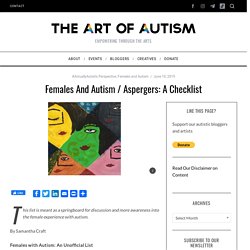
By Samantha Craft Females with Asperger’s Syndrome: An Unofficial List. Rosie King: How autism freed me to be myself. Proprioception and Interoception - Lessons from the Accident Prone - Subtle Yoga. Lessons from the Accident Prone I once had a roommate who frequently, inadvertently, injured herself.

YouTube. My body, your emotions: Viscerosomatic modulation of facial expression discri... Arthur and Day, 1994 W.
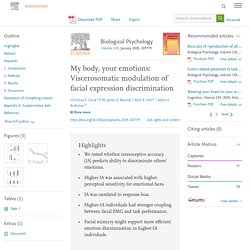
Arthur, D. DayDevelopment of a short form for the raven advanced progressive matrices test. LEARNING TRIANGLE: Without the Vestibular, Visual and Auditory Working Togeth... This article provides helpful information containing the learning triangle and how it promotes learning.

Affiliates are included for your convenience. Integrated Learning Strategies (ILS) is a learning and academic center. As a reminder, ILS is not a health care provider and none of our materials or services provide a diagnosis or treatment of a specific condition or learning challenge you may see in your child or student. If you seek a diagnosis or treatment for your child or student, please contact a trained professional who can provide an evaluation of the child. - Free Articles & Strategies. Updated: May, 2015 © 2019 Think Social Publishing, Inc.
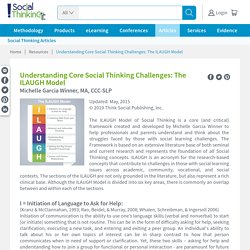
The ILAUGH Model of Social Thinking is a core (and critical) framework created and developed by Michelle Garcia Winner to help professionals and parents understand and think about the struggles faced by those with social learning challenges. The Framework is based on an extensive literature base of both seminal and current research and represents the foundation of all Social Thinking concepts. - Free Articles & Strategies. 6 Apps That Target Higher-Order Thinking Skills.
21st Century Learning 6 Apps That Target Higher-Order Thinking Skills Our expert’s sample activities show how using free tech tools can help students learn to analyze, evaluate and create.

Sheila Hollins: ‘People with learning disabilities must be put at the centre ... Sheila Hollins is one of the UK’s foremost authorities on learning disability and mental health.
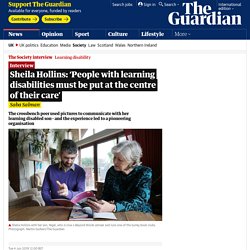
But the crossbench peer says her greatest achievement is founding Beyond Words, a pioneering not-for-profit organisation that produces picture books to help people with communication issues. Why everything you know about autism is wrong. The Human Rights Act – filling in the gaps for children with SEND. In an important decision, the Upper Tribunal has held that children with special needs who have been excluded from schools for aggressive behaviour which is linked to their condition are being discriminated against.
An appeal was brought by the parents of a child (known only as ‘L’) who has autism, anxiety and Pathological Demand Avoidance. L was excluded from school after an incident in which he hit a teaching assistant. This decision was challenged on the basis that children with disabilities that mean they have “a tendency to physically abuse” are not protected by the Equality Act 2010. Why did this raise a human rights issue? The Equality Act 2010 prohibits discrimination on the ground of nine protected characteristics. In L’s appeal, questions were raised over how compatible this regulation was with human rights law.
The effect of discrimination. Is It Sensory Processing Disorder or ADHD? There’s a good chance you have met a child who matches the following description: impulsive, inappropriate touching of others, inappropriate and frequent movement, distractible, unaware when spoken to, difficulty following multi-step directions. When you met this child, you may have been quick to label them. Here’s the question though, what label did you use? The behaviors listed above are common presentations of both ADHD and Sensory Processing Disorder (SPD). Autism symptoms in GIRLS. 'My autistic daughter was held in a cell for two years' Important new work on autism could change interventions. A new paper is pushing back hard on the notion that people with autism are not interested in socializing.
The paper, “Being vs. Appearing Socially Uninterested: Challenging Assumptions about Social Motivation in Autism,” questions the widespread assumption that the primary reason for autistic people's unusual behaviors is that they are not socially motivated. Rather, the authors suggest, their social signals are misunderstood—an insight the authors believe could open the door to more effective interventions. "We hope this research will lead to more respectful treatment of people with autism, as well as development of more effective methods of supporting them," said Nameera Akhtar, a professor of psychology at the University of California, Santa Cruz, who coauthored the paper with lead author, Vikram Jaswal, an associate professor of psychology at the University of Virginia.
"Hearing from autistic people themselves upends much of the conventional thinking. Professor Tony Attwood - Autism in Females. Signs of Sensory Processing Disorder in Kids with ADHD. 1 of 21.